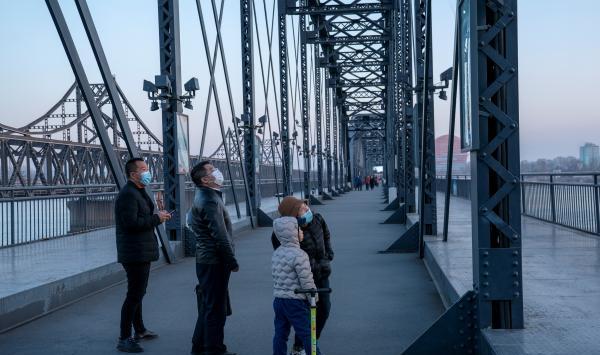One winter a few years ago, I took a train from Dandong to North Korea. Driving on the China-North Korea Friendship Bridge, outside the window is another bridge on the Yalu River. Driving through the heart of the river, the bridge came to an abrupt end in the traces of the baptism of fire.
I have heard the story of the broken bridge on the Yalu River, but when the traces of the war 70 years ago are vividly displayed in front of me, I still feel shocked. The twisted section proves that the shells are powerful enough to tear the steel beams apart.
I don't know how the volunteer soldiers of that year withstood such terrible bombardment to repair bridges and deliver supplies. Why should the Dandong people keep a broken bridge intact? What do people think when they see her?
A few years later, it was still winter, and I revisited my hometown. At the home of Sun Tae-ho, a veteran volunteer soldier, I heard his story.
Sun Tae-ho is an ethnic Korean who fled to China under the age of 10 during World War II. After the turmoil, until liberation, he and his family lived a life without Japanese, bandits and bandits, and without war. Because of this, Sun Tae-ho hates people who break the peace the most. When enemy planes hovered overhead and bombardments could be heard at home, Sun Taiho realized that there would be no peaceful life without repelling the imperialist aggressors.
Cherish peace, and therefore not fear sacrifice – in that great war, the deeds of heroes emerged intensively, and the spirit of heroes competed to be passed on.
Gong Shaoshan, deputy director of the Memorial Hall for Resisting US Aggression and Aiding Korea, told the story: Yang Gensi, a special combat hero, picked up explosives at a critical moment and died with the enemy, and his british name was spread; when another combat hero, Huang Jiguang, was sacrificed, people found three comic strips in his relics, one of which was "Yang Gensi"; and Huang Jiguang's spirit was touched and inspired many people, including Lei Feng...

Photo by Si Zhanwei, a tourist on the broken bridge of the Yalu River
Today, decades later, on the shore of the Yalu River, where the broken bridge can be seen, the spirit of that year can still be felt from time to time.
Dandong director Ma Xiaochun, determined to tell the story of the Sino-DPRK Friendship Bridge and the Yalu River Broken Bridge, bowed deeply to the group of sculptures "For Peace" by the riverside, and began the filming journey of the documentary "Distant Bridge"; Sun Yanhua, an old man in Tonghua, interviewed more than 200 veterans of the War to Resist US Aggression and Aid Korea after retirement, sorted out the information of more than 400 veterans, and wrote hundreds of thousands of words; "post-90s" Wen Changqing has been volunteering to guard the mausoleum for 7 years, and he has been amputated in a car accident at all times in the cemetery, sweeping leaves and patching red paint for the martyrs' tombs.
Where does this persistence come from?
It was late that day, Gong Shaoshan stood halfway up the mountain outside the memorial hall and looked down, and the tall buildings in the center of Dandong flashed with high brightness and high saturation. "Every family in this city participated in the War to Resist US Aggression and Aid Korea." When he said this, he turned his back on me.
I didn't see his expression, but I suddenly understood that the war had reshaped a generation of cities such as Dandong and Tonghua. People here have a sense of responsibility and a sense of mission to inherit and carry forward the spirit of the War to Resist US Aggression and Aid Korea.
On the yalu River broken bridge, a backpacker from Guangdong said to me: "From south to north, it is a special trip to see this bridge." Stop at the historical relics, those "loveliest people" of that year are in front of us, and the pulse is looking at us.
Column Editor-in-Chief: Zai Fei Text Editor: Zai Fei Title Map Source: Yalu River Surface Si Zhanwei Photo
Source: Author: Hu Xingyang